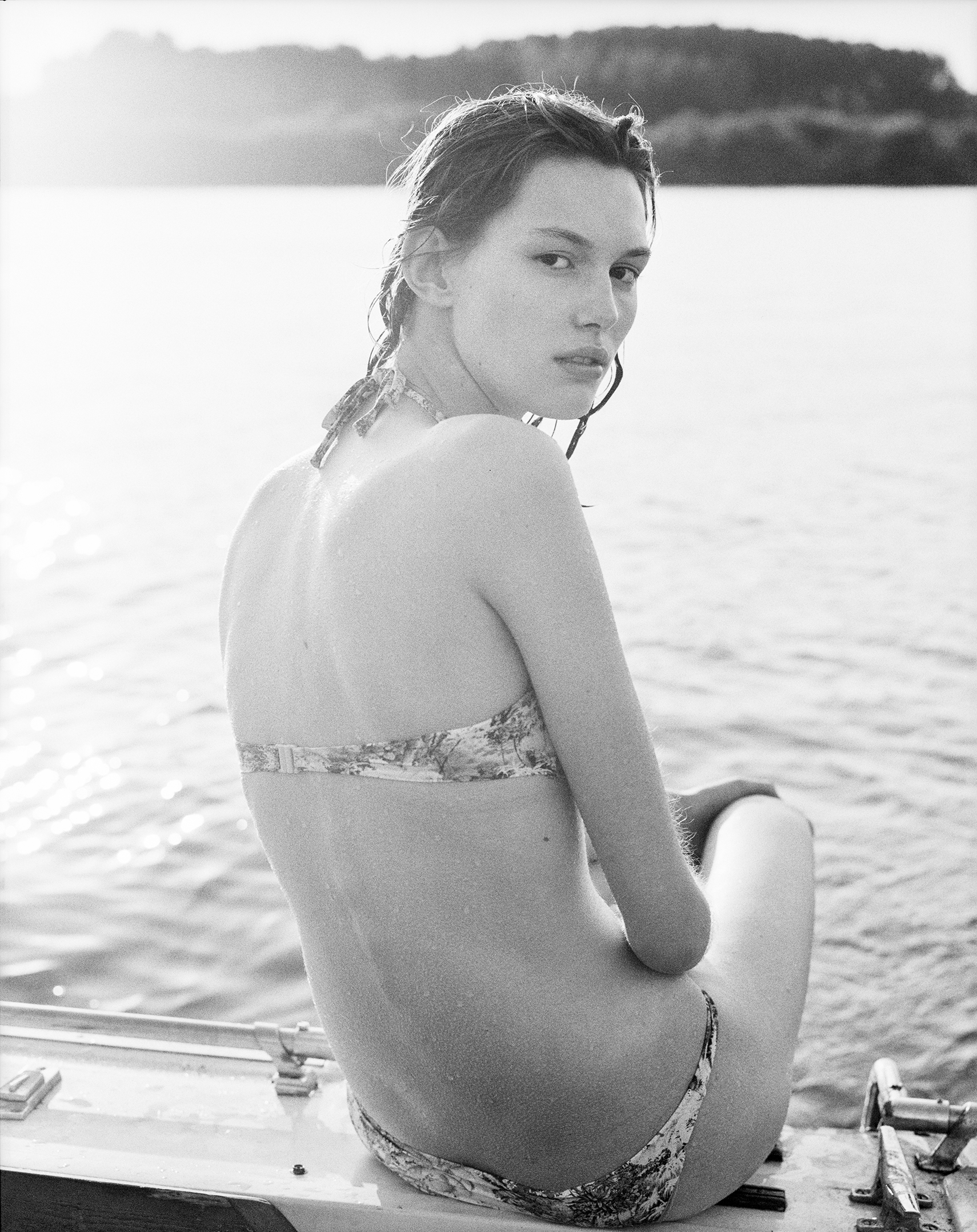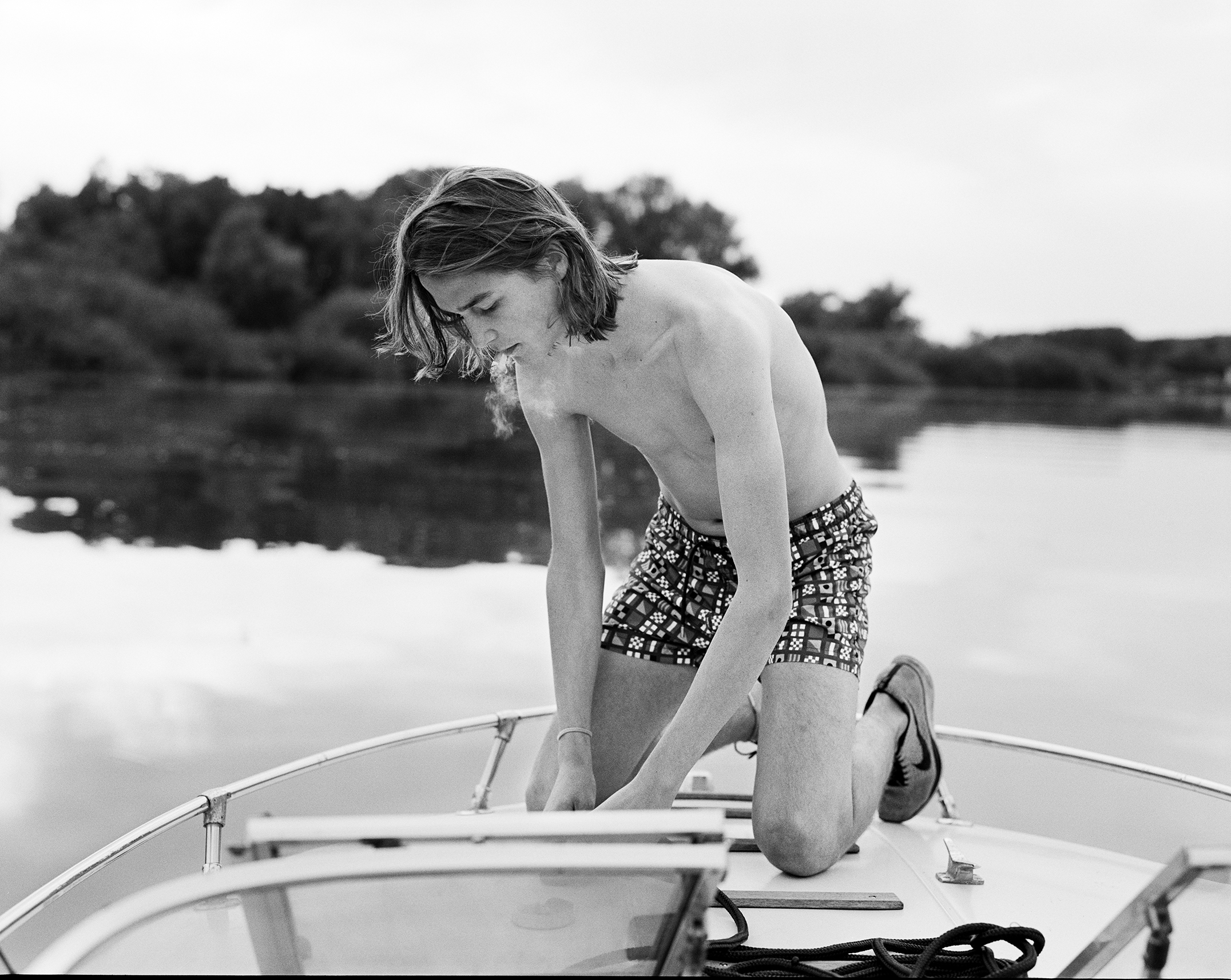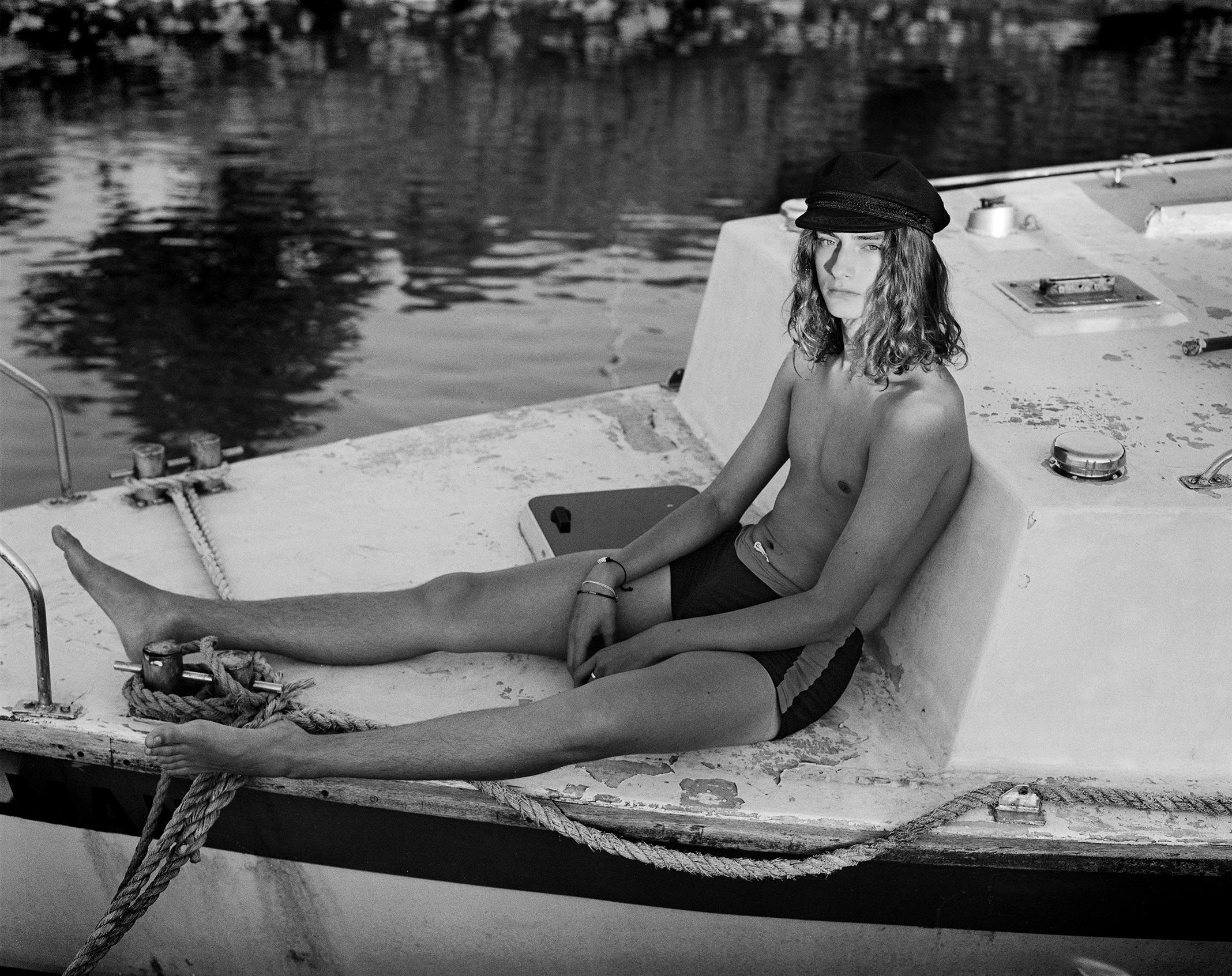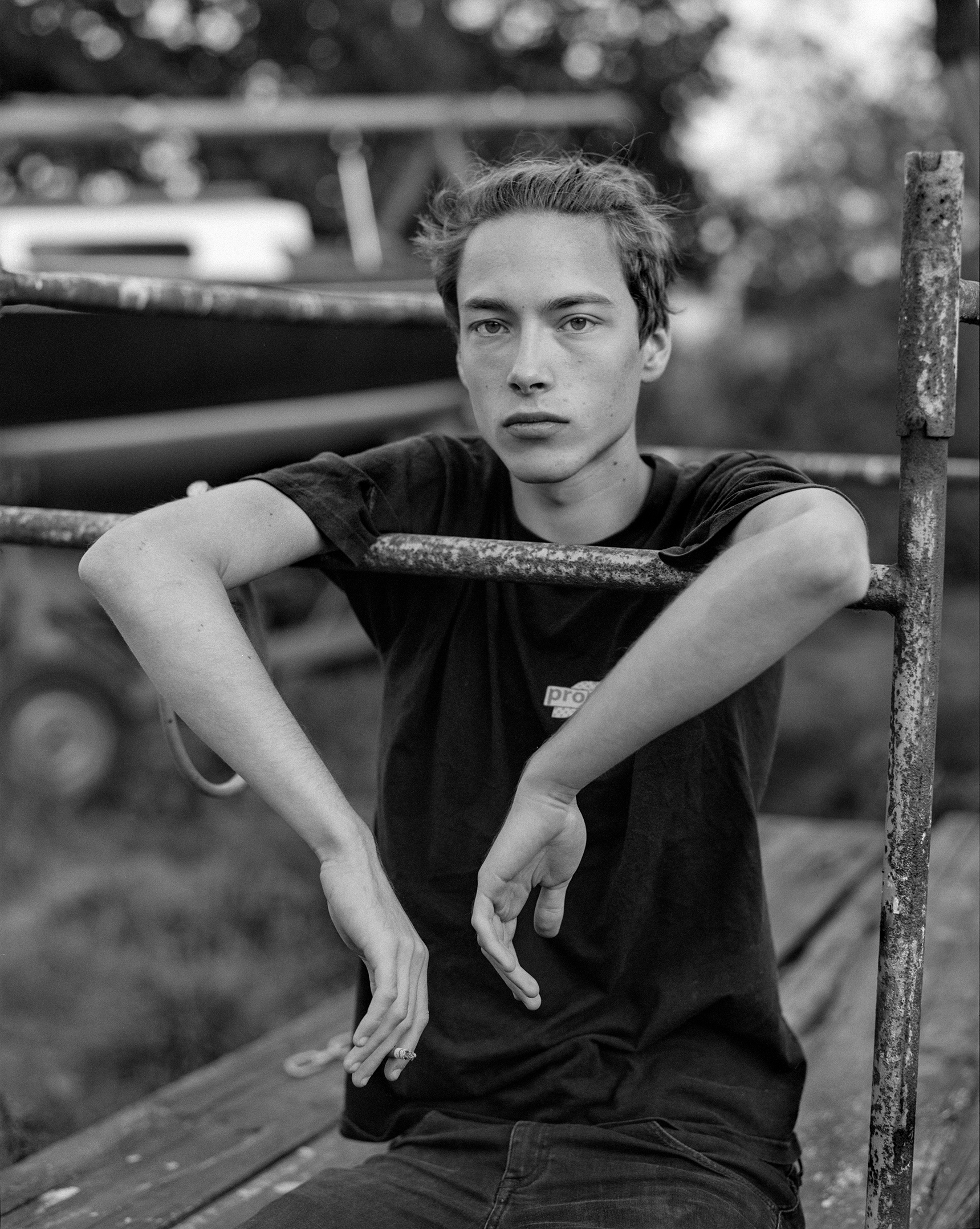CHARLIE DE KEERSMAECKER
Down By The River
18.05 - 25.06.23
Internationally renowned portrait and fashion photographer Charlie De Keersmaecker interprets in the series ‘Down By The River’ (2018) his bygone youthful summers by and on the water of the Scheldt. His models exude a certain naivety, but can also be suspected of having a touch of condescension towards anyone who does not belong to their circle of friends or was not there that summer on the bank. Even though all faces and bodies are atypical, they seem to pop straight out of a fashion magazine According to De Keersmaecker, the series is unvarnished, non-concealing, and certainly personal and aesthetic.
The North Sea breathes the same atmosphere during its summers when flocks of people stay there temporarily; interrupting their ordinary life in order to briefly experience another. At the end of the holiday, new friendships and secret memories go into an imaginary photo album, and people can look forward to that next warm and brash vacation for almost the entire year to come.
Nominated for LensCulture Art Photography Awards 2019:
“Timeless and organic, Charlie De Keersmaecker’s project ‘Down By The River’ projects the honesty and freedom exhibited in yet-to-be-tested youth. The lack of technology and purposeful clothing lend a timeless quality to the series, allowing the viewer to project themselves into the scene and connect with each image, taking you back to a time when there was uncertainty yet endless opportunity.”
Anne Farrar, Director of Photography / National Geographic Traveler.
DIE PLEK
ALBERTA - ROYAL BELGIAN SAILING CLUB (RBSC) OMOOKAAI 2, 8380 ZEEBRUGGE - PORT OF BRUGES, BELGIUM


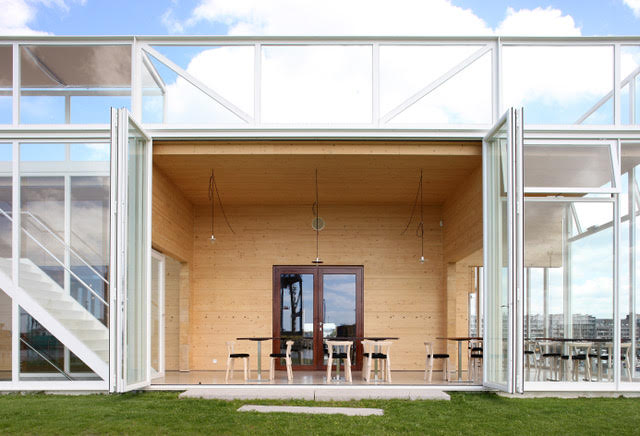
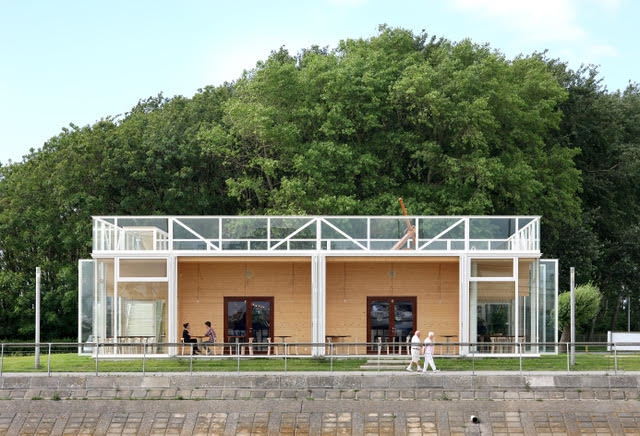
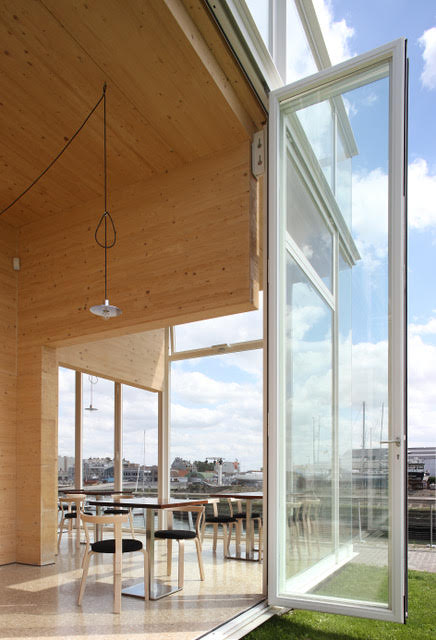




Open : Thursday - Monday: 11:00 - 14:00 and again 18:30 - 20:30.
Closed : Tuesday - Wednesday.
On the edge of a peninsula, between two extremes, the Royal Belgian Sailing Club Alberta is located. On the one side, a container port. Inhumane scale, ongoing activity, day and night and throughout the year. High cranes moving about the cargo ships, transporting the multi-coloured containers like playing a 3D Tetris game, compiling the excess of the global economy. On the other side, a marina. Human Scale, a source of history and sophistication. Sailing boats next to one another. Gear lashing the masts in a rhythmic manner.
The original club house Alberta is named after the steamer of the former Belgian King who inaugurated the harbour in 1907. The Alberta then looks like a house, painted white with a concrete eave, imbuing it with a horizontal character. Certain similarities with the modernist house Villa Colman-Saverys, designed by Henry Van de Velde in 1931 can be seen. The club house hosts a small restaurant and bar. The interior with wooden tables and chairs, models of sail boats, knotted ropes, medals and trophies, make the place cosy and the atmosphere pleasant. The whole setting breathes nostalgia. You can imagine colourful fishing boats entering the harbour, trailed by hungry seagulls screaming, stealing fish and laughing. You imagine a harbour with wooden stalls and vendors shouting, selling the catch of the day.
In 2007 Wim Goes Architects were asked to think about modifying the Alberta in order to cope with contemporary needs. There was an ancient method used to build the wooden core of the new building. Instead of using lumber, they opted for laminated wood because of its structural benefits: it can stack, span and cantilever. The cross-joint technique naturally forms a quadruple # floor plan. The joints thus indirectly give shape to the building. Three axes cross another three perpendicularly. The geometrical plan is equal to all points of the compass. Four rooms forming the core are surrounded by eight half-rooms and, at the corners, four quarter-rooms. A metal and glass membrane enfolds the body. Six metal folding windows hang on trusses that serve as a railing making the roof accessible. The skin - the windows - catches the force of the wind and protects the wooden structure. In-between, the unheated glass passage serves as a layer of insulation (skin - air - body), as a function of the heated core, like a thermos bottle. The passage takes advantage of solar gains for heating and cross-ventilation for cooling, as well as regulating the air quality, by means of opening and/or closing the single glazed windows.
Wim Goes in ‘Reverse Perspective’ (2020)

